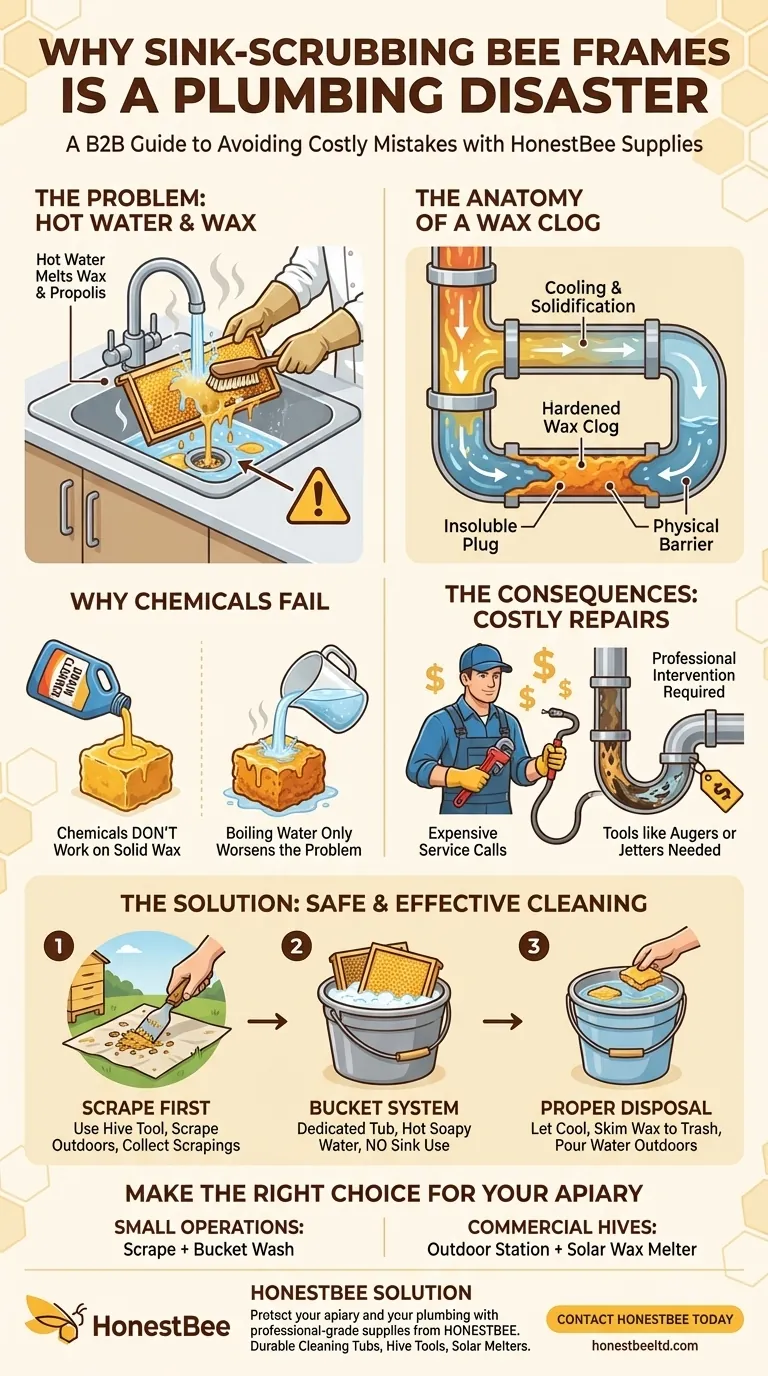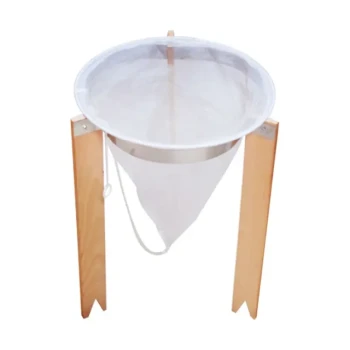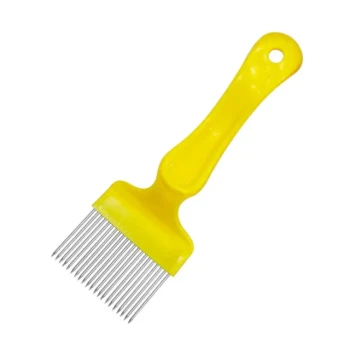The short answer is simple: Cleaning bee frames in your sink is a direct route to a severe and costly plumbing disaster. The hot water required for cleaning melts the residual beeswax, which then flows down the drain, cools, and solidifies into a hardened clog deep within your pipes.
The convenience of using a sink is a false economy. It creates a unique and stubborn type of plumbing blockage that common drain cleaners cannot fix, often requiring expensive professional intervention.

The Anatomy of a Wax Clog
Understanding why beeswax is uniquely hazardous to your plumbing system is the key to avoiding this common beekeeping mistake. It behaves differently than typical kitchen grease or soap scum.
How Hot Water Becomes the Problem
The very tool you use to soften and remove wax—hot water—is what initiates the problem. It liquefies the beeswax and propolis, allowing them to be carried away with the wastewater.
The Cooling and Solidification Process
As this hot, wax-laden water travels down your drainpipes, it rapidly loses heat to the surrounding pipes and cooler water. The wax quickly returns to its solid state, adhering firmly to the interior surfaces of your plumbing.
Why Wax is a Unique Threat
Unlike a grease clog, which can sometimes be broken down by harsh chemicals, a beeswax clog is essentially a solid, water-insoluble plug. It creates a physical barrier that is exceptionally difficult to remove without mechanical tools.
Understanding the Consequences
The immediate mess in your sink is minor compared to the long-term damage occurring out of sight. The consequences of this seemingly small act can be significant.
The Failure of Standard Fixes
Pouring more boiling water down the drain is rarely effective; it may slightly melt the surface of the clog, only for it to re-harden further down the line. Chemical drain cleaners are formulated for hair and grease, and typically have no effect on solid wax.
The Cost of Professional Removal
Removing a hardened wax clog almost always requires a professional plumber. They may need to use specialized tools like a mechanical auger (snake) or a high-pressure jetter, resulting in a service call that is far more expensive than any convenience gained.
How to Clean Frames Safely and Effectively
The correct procedure protects your home's plumbing and keeps your beekeeping operation running smoothly. The principle is simple: keep wax out of your drains entirely.
Step 1: Scrape First, Wash Later
The vast majority of cleaning should be done mechanically, away from any water source. Use a hive tool to thoroughly scrape off as much wax and propolis as possible. Do this outdoors or over a tarp to easily collect the valuable scrapings.
Step 2: Use a Dedicated Bucket System
For the final wash, use a dedicated bucket or tub filled with hot, soapy water. This allows you to scrub the frames clean without introducing any wax into your plumbing system.
Step 3: Dispose of Wastewater Properly
Once you are finished, allow the wash water to cool completely. The wax will solidify and either float to the top or sink. You can then skim off the solid wax for disposal in the trash, and the remaining water can be safely poured out in a discreet outdoor location.
Making the Right Choice for Your Goal
If your primary focus is cleaning a small number of frames: Scrape them thoroughly outdoors first, then use a simple bucket of hot, soapy water for the final wash.
If your primary focus is managing multiple hives efficiently: Establish a dedicated outdoor cleaning station and consider investing in a solar wax melter to both clean frames and reclaim valuable beeswax.
Protecting your plumbing is just as important as maintaining your hives.
Summary Table:
| Problem | Why It Happens | Consequence |
|---|---|---|
| Wax Clog | Hot water melts wax, which solidifies in pipes | Creates a solid, insoluble plug |
| Ineffective Fixes | Chemical cleaners don't work on solid wax | Standard methods fail |
| Costly Repair | Requires professional plumbing tools (auger/jetter) | Leads to expensive service calls |
Protect your apiary and your plumbing with the right equipment from HONESTBEE.
Cleaning frames safely is essential for commercial beekeepers and distributors managing multiple hives. We supply durable, wholesale-focused beekeeping supplies—like dedicated cleaning tubs, hive tools, and solar wax melters—to help you establish an efficient, plumbing-safe cleaning station.
Avoid costly downtime and repairs. Contact HONESTBEE today to get the professional-grade equipment your operation needs.
Visual Guide

Related Products
- Professional Honey Filter with Tripod Support Stand
- Economy Small Scale Honey Dryer Dehumidifier Thickening Machine
- Extra-Wide All-Stainless Steel Honey Uncapping Fork with T-Handle
- 6 Frame Manual Stainless Steel Honey Extractor Beekeeping Equipment
- Professional Durable Plastic Handle Honey Uncapping Fork
People Also Ask
- Is it necessary to filter honey after extraction? A Guide to Straining vs. Raw Honey
- What filter size for honey? A Beekeeper's Guide to Straining for Clarity and Quality
- What is better, a 100 or 200 micron filter? Find the Right Fit for Your Water System
- What is the role of filtration in honey processing? Ensure Purity, Clarity, and Shelf Life
- Why is it important to inspect and replace filters in honey filtering equipment? Protect Your Honey Quality & Equipment



















